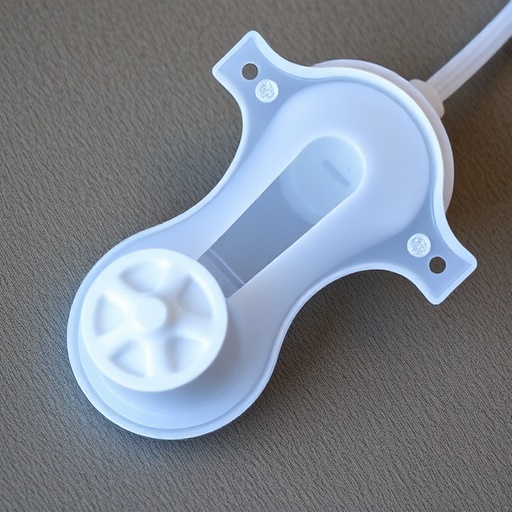Per- and polyfluoroalkyl substances, commonly known as PFAS, have gained significant attention due to their pervasive presence in various consumer products. Often referred to as “forever chemicals,” PFAS are notorious for their persistence in the environment and human body, raising concerns about potential health risks. Recent research has now shed light on an emerging category of products—period products—which have been found to contain these harmful substances. This discovery adds to the growing body of evidence linking PFAS to numerous health issues, as these chemicals are notorious for their ability to repel water and stains, making them attractive for use in everyday items.
A recent study published in the American Chemical Society’s journal Environmental Science & Technology Letters explores the prevalence of PFAS in reusable feminine hygiene products. The researchers, led by Graham Peaslee from the University of Notre Dame, conducted an extensive analysis of various reusable period products, including period underwear and reusable pads. The study is crucial as it highlights a previously overlooked segment of consumer items experiencing rapid growth, yet it also underscores the apparent unnecessary use of these chemicals in such products.
The study builds upon prior findings where researchers screened multiple period products for fluorinated compounds, which are precursors to PFAS. This earlier research revealed that many tested items, including both single-use and reusable options, contained these fluorinated compounds. However, it also indicated that some products were free of fluorine altogether. Following this groundwork, the research team conducted a more in-depth investigation, focusing on 42 specific PFAS across products sourced from North America, South America, and Europe.
.adsslot_7YLXZxJmNW{ width:728px !important; height:90px !important; }
@media (max-width:1199px) { .adsslot_7YLXZxJmNW{ width:468px !important; height:60px !important; } }
@media (max-width:767px) { .adsslot_7YLXZxJmNW{ width:320px !important; height:50px !important; } }
ADVERTISEMENT
To assess the presence of PFAS specifically in reusable products, the researchers screened 59 various period and hygiene products for fluorine content. They subsequently narrowed their analysis to a subset of 19 items, which included a diverse range of products such as menstrual cups, reusable incontinence underwear, and reusable pads from different geographical regions. Alarmingly, the results revealed that one-third of the period underwear tested, along with one-quarter of the reusable pads, contained noteworthy levels of fluorine, suggesting intentional PFAS incorporation during the manufacturing process.
The concentrations found were particularly concerning, with one-quarter of the period underwear displaying at least 1,000 parts per million (ppm) of fluorine, and some samples even hitting levels as high as 77,000 ppm. Such high concentrations raise grave health concerns for consumers, especially since these “forever” chemicals are known to leach into wastewater during washing or disposal, potentially impacting the environment and public health. Moreover, existing research indicates that skin contact with PFAS-laden products may facilitate absorption into the human body, adding another layer of risk to users of these items.
Despite these alarming findings, the study did report a silver lining: 71% of the products tested, across all categories, did not exhibit intentional PFAS. This finding, along with previous research showing certain products lacked fluorine, suggests that PFAS may be an unnecessary component in the manufacturing processes of these reusable items. Researchers hope these findings will raise awareness among consumers regarding PFAS in feminine hygiene products and motivate manufacturers to reconsider their use of such harmful substances in production.
As society becomes increasingly aware of the potential risks associated with chemical exposure, particularly with substances like PFAS, the findings from this study are timely. They prompt a crucial discussion about consumer safety and the ethics involved in product development. Health professionals and environmental activists alike advocate for greater transparency in manufacturing, emphasizing that consumers deserve to know what is in the products they use regularly, especially those that come in close contact with sensitive areas of the body.
The implications of this research extend beyond just the realm of feminine hygiene products. The study showcases a broader concern with the chemical composition of consumer goods, particularly regarding environmental sustainability and health safety. As organizations and advocacy groups push for stricter regulations and standards surrounding chemical use in manufacturing, studies like these provide the necessary evidence to drive policy changes and consumer action.
Researchers are also calling on manufacturers to investigate alternative materials that can achieve similar hygienic and functional requirements without resorting to harmful chemicals like PFAS. They assert that innovation in product design is essential to protect both consumer health and the environment. In this context, sustainable alternatives can help to pave the way forward toward a more health-conscious and environmentally friendly future.
The study’s findings ignited a substantial call to action for both consumers and industry stakeholders. They highlight the growing necessity for consumers to advocate for their health and well-being, holding companies accountable for the safety of their products. Furthermore, as more studies surface revealing the extensive reach of PFAS in various segments of consumer products, the urgency for a collective response increases.
In conclusion, the research on PFAS in reusable feminine hygiene products underscores the critical intersection of consumer safety, environmental health, and corporate responsibility. As awareness spreads regarding the risks associated with these substances, there is a pressing need for re-evaluation of manufacturing practices and product formulations across industries. The findings aim to facilitate positive changes that prioritize the health of consumers and the planet, breaking free from the chains of “forever chemicals” that have long threatened human health and environmental integrity.
Subject of Research: The presence of PFAS in reusable feminine hygiene products.
Article Title: “Per- and Polyfluoroalkyl Substances in Reusable Feminine Hygiene Products”
News Publication Date: 22-Jul-2025
Web References: DOI link here
References: N/A
Image Credits: N/A
Keywords
PFAS, reusable period products, feminine hygiene, consumer safety, environmental health, health risks.
Tags: environmental impact of PFASforever chemicals in feminine hygienehealth risks of PFAS exposureimplications of PFAS in women’s healthmenstrual health and toxic substancesPFAS in reusable menstrual productsprevalence of PFAS in consumer itemsresearch on fluorinated compoundsreusable period underwear concernsstudy on period products safetysustainable hygiene product safetyUniversity of Notre Dame PFAS study






